|
JOHN RAVENAL | Recently Acquired, Virginia Museum of Fine Arts
Monumental Sculpture by Sol LeWitt
A recent purchase by the Virginia Museum of Fine Arts (VMFA) gives us a broad representation of Sol LeWitt’s career and adds an important and beautiful sculpture to the museum’s holdings. The work stands more than twelve feet tall and belongs to a series of colorful non-geometric forms that LeWitt called Splotches—a playful word he coined that reflects their bright colors and exaggerated forms.
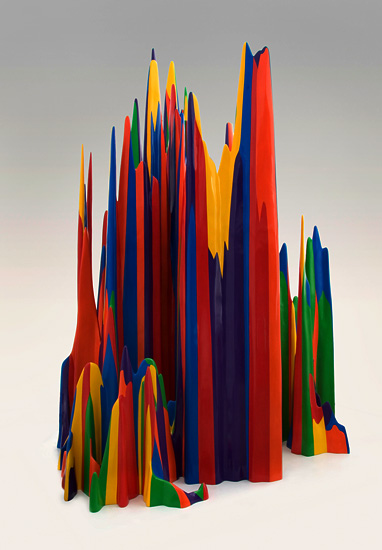 |
Sol LeWitt (American, 1928–2007)
Splotch #22, 2007
Acrylic on fiberglass
ca. 148 x 96 x 86 inches
Virginia Museum of Fine Arts, Richmond
The Sydney and Frances Lewis Endowment Fund, and partial gift
of the artist and Pace Wildenstein in honor of Frances Lewis and
in memory of Sydney Lewis
© Virginia Museum of Fine Arts and courtesy of the estate of
Sol LeWitt
|
| |
Splotch #22 is the largest and most complex of these pieces. It is also the last, as LeWitt died in April 2007, during its fabrication. LeWitt is internationally acclaimed as the founder of Conceptual Art, a movement that began in the 1960s and emphasized the idea or concept over the finished object. VMFA owns three other works by LeWitt that show the evolution of his art. The earliest is a classic open cube sculpture.
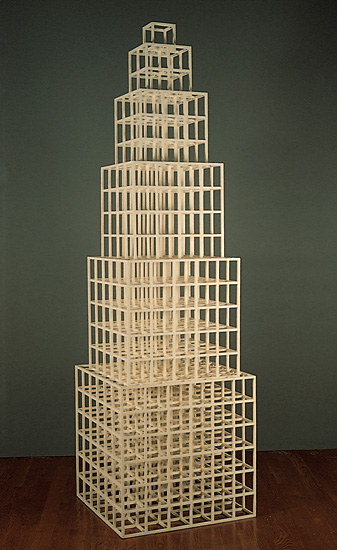 |
Sol LeWitt
1 2 3 4 5 6, 1978
Painted wood
99¼ x 29 x 29 inches
Virginia Museum of Fine Arts, Richmond
Gift of The Sydney and Frances Lewis Foundation
Photo: Ann Hutchison
© Virginia Museum of Fine Arts and courtesy of the
estate of Sol LeWitt
|
The title—1 2 3 4 5 6—indicates the work’s structure: six tiers of cubes based on the single modular unit at the top. By the bottom tier, the cube is made of six by six by six of these units. It’s a straightforward execution of a simple idea—just the way LeWitt liked it. But the results are far from simple. The finished work combines fragility with monumentality and clarity with complexity (a viewer circling the piece sees a kaleidoscope of shifting views into and through the structure).
The next piece in VMFA’s collection is a four-part “wall drawing” (you see only three parts here). It’s made of colored ink washes rubbed directly onto the plaster wall with soft cotton cloths, giving the appearance of fresco. The piece was first made in 1987 for a temporary exhibition, and then painted out.
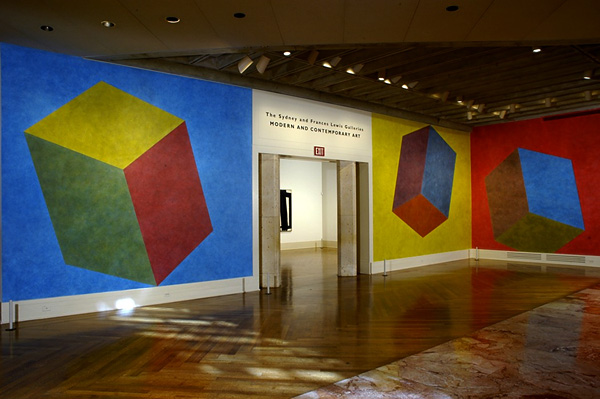 |
Sol Lewitt
Wall Drawing #541, 1987 (detail)
Ink wash on wall
Dimensions vary with installation
Virginia Museum of Fine Arts, Richmond
The Sydney and Frances Lewis Endowment Fund
Photo: Travis Fullerton © Virginia Museum of Fine Arts and courtesy of the estate of Sol LeWitt |
| |
When VMFA bought the work in 1999, we received only instructions and a certificate of authenticity. We had it installed by LeWitt’s draftspeople and art student helpers.
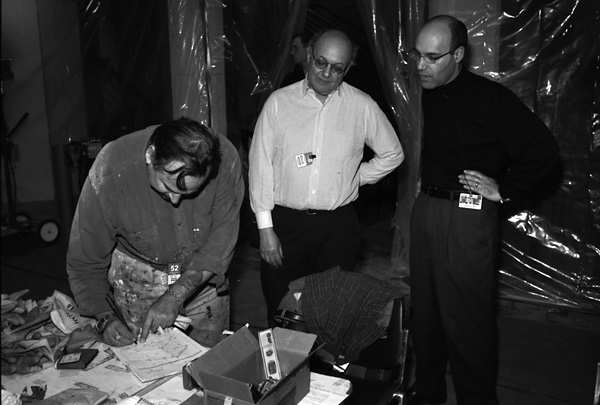 |
During installation of wall drawing #541 at VMFA, 2000
Photo by Denise Lewis © Virginia Museum of Fine Arts and courtesy of the estate of Sol LeWitt |
| |
This approach rejects the conventions of the unique art object: the wall drawing can be repeatedly installed and de-installed; it can even exist in more than one location at the same time. In addition, the artist need not install the work himself, dismissing the high value traditionally placed on personal subjective expression. LeWitt likened his wall drawings to musical scores or architects’ plans, reminding us that we don’t require the composer to play first violin nor the architect to lay the bricks.
For most of his career, LeWitt was closely identified with geometric and rectilinear forms. In the mid-1990s, however, LeWitt’s forms began to loosen. You can see this in the large gouache painting—an opaque water-based medium—that VMFA acquired last year directly from the artist’s personal collection. Wavy hand-painted lines in primary colors and white and black stretch from edge to edge of the six-foot-wide image, creating an energetic field.
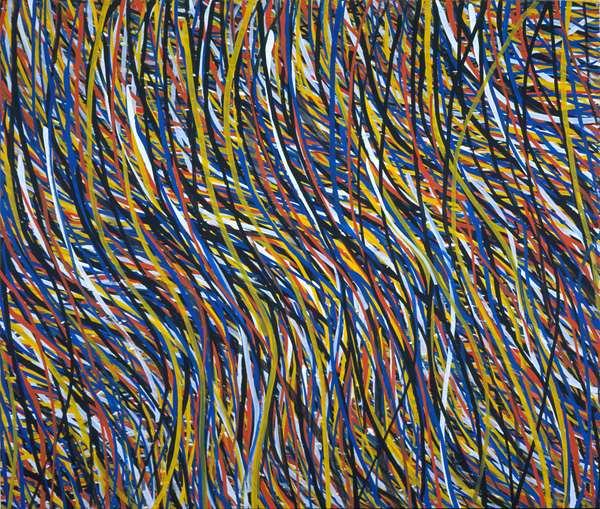 |
Sol LeWitt
Wavy Brushstrokes, 1996
Gouache on paper
60½ x 70½ inches
Virginia Museum of Fine Arts, Richmond
The Sydney and Frances Lewis Endowment Fund
Photo: Katherine Wetzel © Virginia Museum of Fine Arts and courtesy of the estate of Sol LeWitt
|
| |
By the end of the 1990s, LeWitt began exploring irregular shapes in three dimensions. At first he simply called the sculptures “non-geometric forms.”
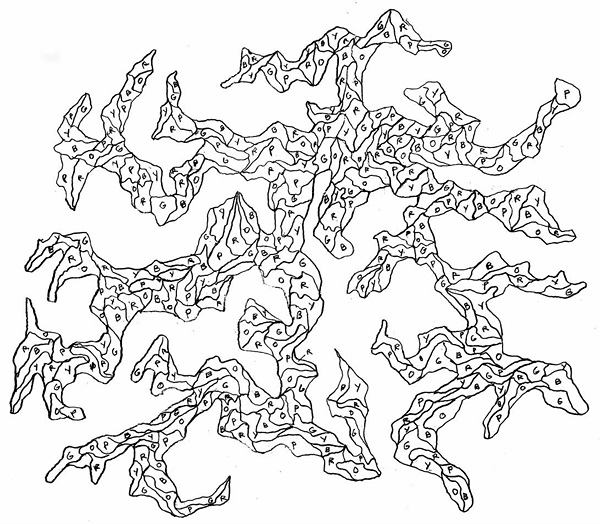 |
Artist’s drawing for Splotch #22 (color), ca. 2004-2005
Ink on paper
Courtesy of the estate of Sol LeWitt |
| |
By 2005, when LeWitt conceived the large sculpture that VMFA acquired, the non-geometric forms had become much more complex. These two drawings are the footprint, or floor plan, for our piece. The first one has notations showing the primary or secondary colors for each section. The second one shows height in inches for each section.
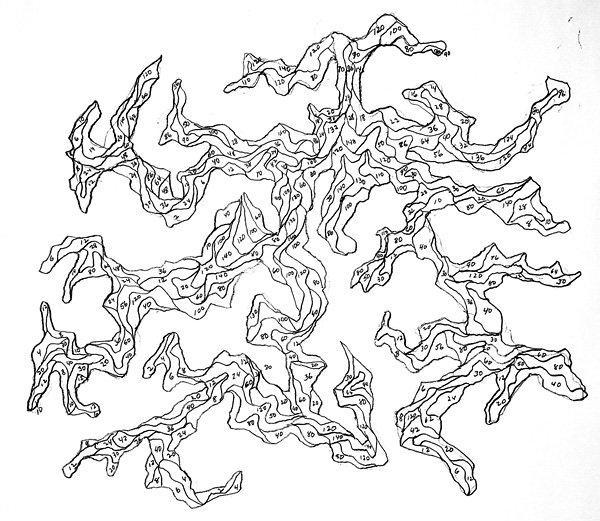 |
Artist’s drawing for Splotch #22 (height), ca. 2004–2005
Ink and graphite on paper
Courtesy of the estate of Sol LeWitt |
| |
LeWitt sent both drawings to his fabricator in Brooklyn. Here’s the fabricator’s computer translation of the color notations and height notations (darker = taller).
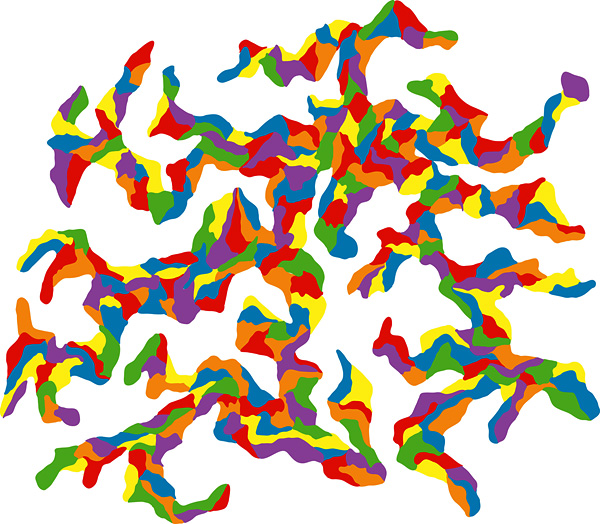 |
Computer rendering from artist’s drawing (color), ca. 2005
Computer print on paper
Courtesy of the estate of Sol LeWitt |
| |
|
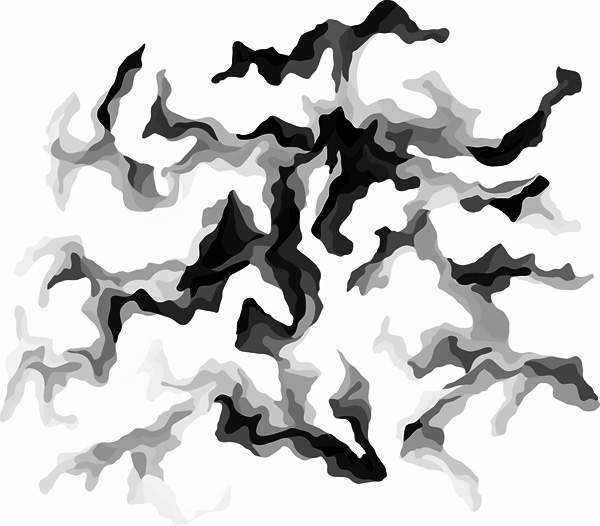 |
Computer rendering from artist’s drawing (height), ca. 2005
Computer print on paper
Courtesy of the estate of Sol LeWitt |
| |
Then, using 3-D computer modeling software, the fabricator began to visualize the footprint as a three-dimensional forma and view it from several angles.
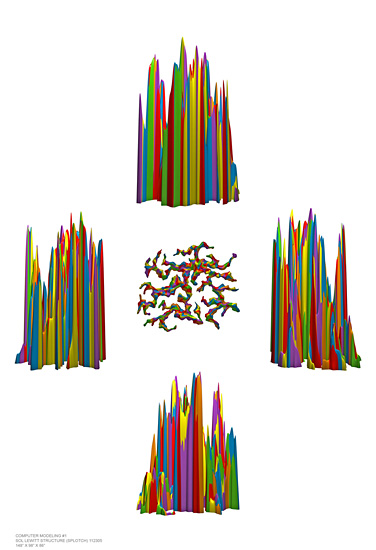 |
CAD renderings for Splotch #22, ca. 2005
Computer print on paper
Courtesy of the estate of Sol LeWitt |
| |
Soon construction began, using stacked, laminated, and carved industrial foam and a coating of fiberglass and epoxy.
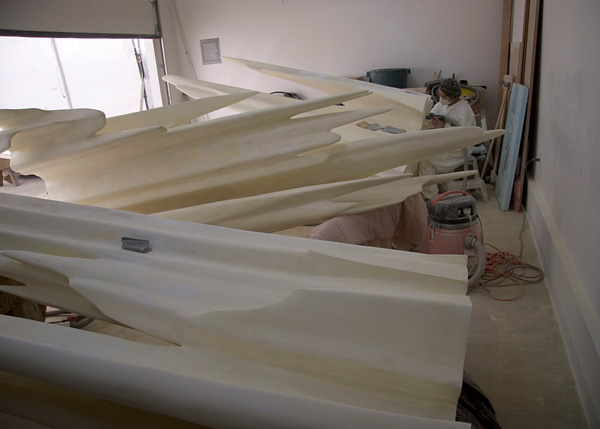 |
Work in progress on Splotch #22, ca. 2006
Courtesy of the estate of Sol LeWitt |
| |
| |
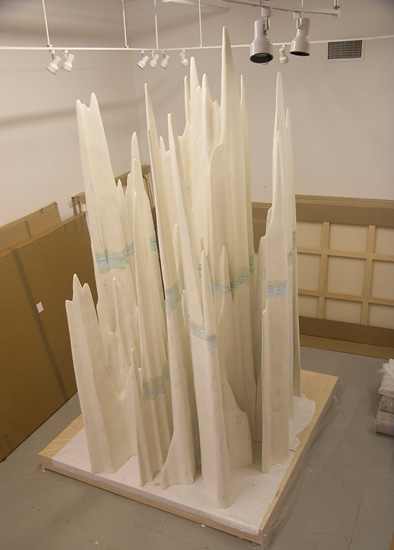 |
Work in progress on Splotch #22, ca. 2006
Courtesy of the estate of Sol LeWitt |
| |
Once LeWitt had approved the form, the hand-painting began.
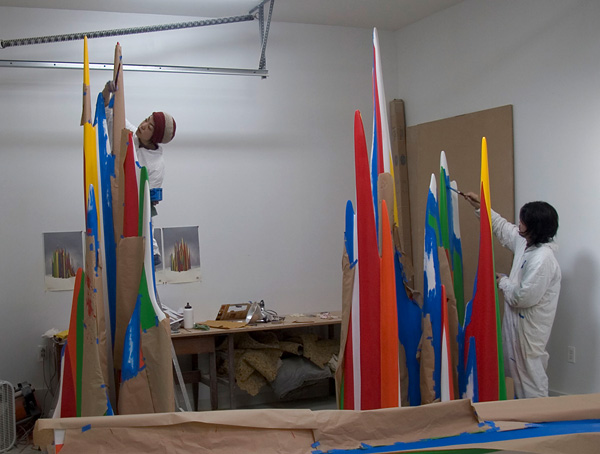 |
Work in progress on Splotch #22, ca. 2007
Courtesy of the estate of Sol LeWitt |
| |
Multiple layers of paint, sanded in between coats, polished, and protected under a clear sealer, created a bright, glossy finish.
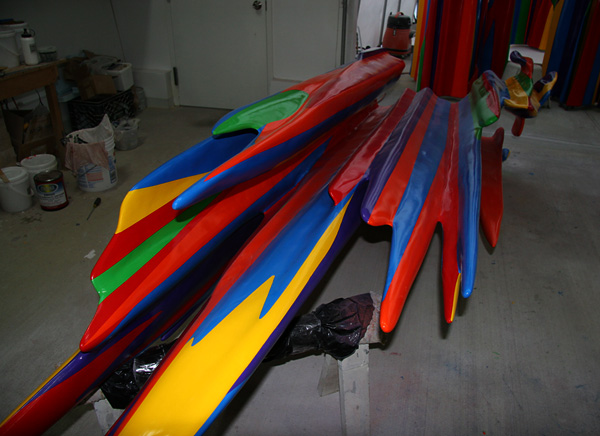 |
Work in progress on Splotch #22, ca. 2007
Courtesy of the estate of Sol LeWitt |
| |
The finished piece (seen below in the fabricator’s shed) has a spectacular presence. Its dense cluster of pinnacles suggests gothic spires, alpine peaks, or stalagmite formations. Joined to the cheerful primary and secondary colors, and standing more than twelve feet tall, it has a colossal and exuberant impact.
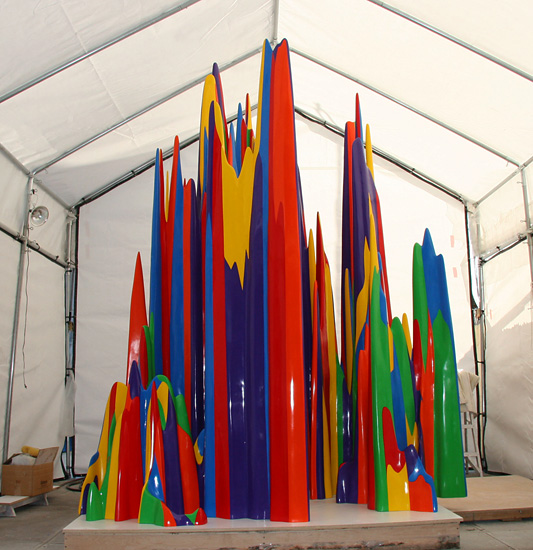 |
Sol LeWitt
Splotch #22, 2007
Finished work at fabricator’s
Courtesy of the estate of Sol LeWitt |
| |
Splotch #22 will have a prominent location in VMFA’s new wing—currently under construction and scheduled to open in late 2009. In one possible scenario, it would anchor the future Atrium, seen below with the piece inserted into the architect’s rendering at the far end towards the future Sculpture Garden.
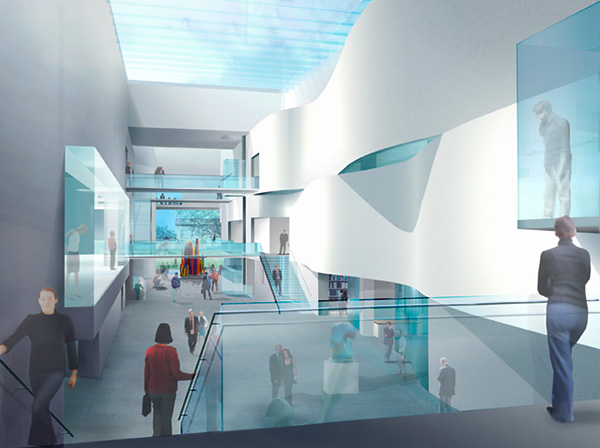 |
Architect’s rendering (Rick Mather) of VMFA Atrium (anticipated completion late 2009) with LeWitt
Splotch #22 inserted
© Virginia Museum of Fine Arts |
| |
This stunning work of contemporary sculpture will no doubt create a memorable icon for our new central public space and a joyous welcome to our visitors. 
Contributor’s Notes 
return to top
|